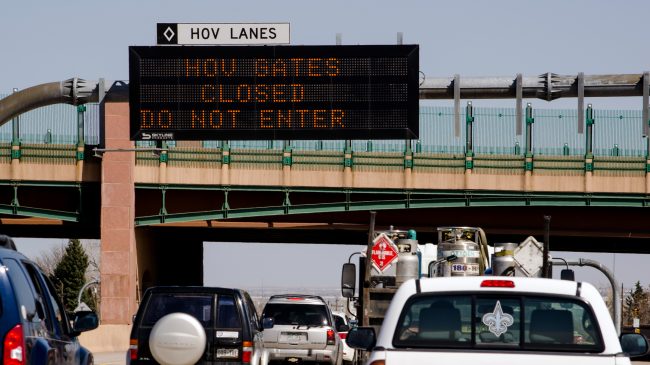For the last 40 years, federal transportation policy has encouraged carpooling. Unfortunately, the percentage of commuters carpooling continues to decline. And, many of the carpools are made up of family members traveling together (known as fampools). Approximately 75 percent of two-person carpools are fampools.
State departments of transportation built dedicated carpool, or high-occupancy vehicle (HOV), lanes to encourage workers from different households to travel to work together, not to give special treatment to workers from the same household who would likely travel together regardless of transportation policy.
The decrease in carpools isn’t the only problem states are examining. HOV lanes lack consistent travel speeds, political support, and don’t offer reliable commute times for transit systems.
Research from a variety of sources, including the Texas Transportation Institute, University of California Berkeley, Georgia Tech, and the National Institutes of Health confirm the dismal carpool numbers: The percentage of commuters’ carpooling has declined by more than 50 percent over the past 40 years.
The decline in carpooling makes HOV lanes on highways less valuable. Most HOV lanes suffer from a so-called ‘Goldilocks’ phenomenon— they are either “too hot” or “too cold.” Too hot means the carpool lanes are just as congested as general purpose (GP) lanes and don’t provide faster travel times for users. Too cold means the HOV lanes have too few users and can prompt opposition from drivers using the general purpose lanes who see the empty space in carpool lanes and view that capacity as being wasted.
One solution for states would be to convert more of their HOV lanes to high-occupancy toll (HOT) lanes. Managing traffic by allowing single-occupant vehicles to pay tolls to use the carpool lanes can solve many problems. For example, as the real value of gas tax revenues declines across the country, variable-priced tolling provides needed transportation revenue to build, maintain and operate the lanes.
Variable-priced tolling, or dynamic pricing, uses a roadway’s prevailing traffic flows to dictate the prices of tolls. Variably-priced toll lanes aim to keep traffic free-flowing at the maximum speed limit, ensuring a congestion-free trip in the lane. For example, during busy rush-hours the cost to use the toll lanes may increase, reflecting the greater demand for the lanes at those times of day. As more cars enter the lanes, prices increase. At various price points, some drivers become unwilling to pay the toll and choose to use the general purpose lanes.
HOT lanes are increasingly gaining support from carpoolers, business groups, economists and environmental groups. The toll lanes can also gain support from transit-oriented groups.
One of the biggest problems with carpool lanes has been when they become congested they slow down the operating speeds of mass transit systems using them. When bus and vanpool travel is slow and tedious, few riders who are using transit by choice will go with those options due to their slow travel times.
Shifting HOV lanes to HOT lanes, ensures bus and vanpools can increase speed in an attempt to increase ridership. And this allows more people to move through the corridor. Miami’s managed lanes provide empirical evidence of this—ridership increased four-fold in the first five years after the opening of its I-95 express lanes.
Moving more people is one of the primary goals of highways and managed lanes (MLs) and toll lanes are increasing in popularity across the country. Many metro areas, such as Atlanta, Dallas-Fort Worth, Denver, Los Angeles, Miami, Minneapolis, San Francisco, Seattle and Washington, D.C., have all added managed lane networks (including HOT lanes and express toll lanes) to their long-range transportation plans.
In Los Angeles, for example, the managed lanes span across two different freeways: I-10 and I-110. The lanes exist in both directions on I-110 for approximately 12 miles, starting at the Harbor Gateway Transit Center in the south, and continuing north to downtown Los Angeles (Adams Boulevard). The MLs on I-10 stretch approximately 11 miles in both directions between Union Station in downtown Los Angeles and El Monte Station. In addition to the existing MLs in the greater Los Angeles area, the Southern California Association of Governments (SCAG) is studying the prospect of adding MLs on I-105 (specifically HOV lanes).
Converting carpool lanes to toll lanes enables states to improve transit service, make better use of their highways, offer drivers uncongested options, and generate sustainable revenue sources to maintain the lanes.

